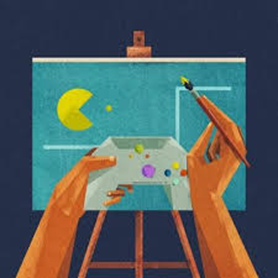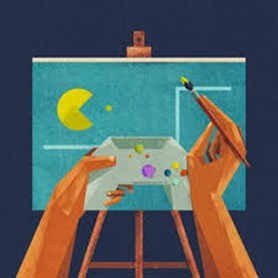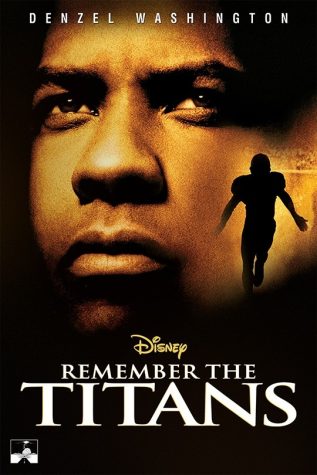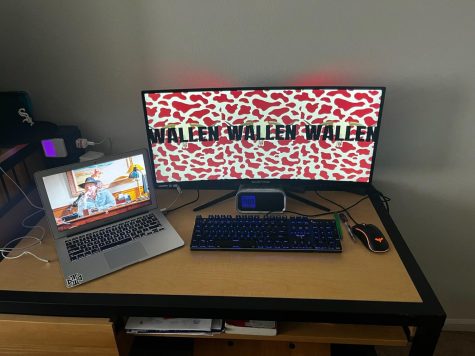Video Games as Art

When thinking about all the different forms of entertainment humans have access to, video games have arguably been deemed as one of the most expandable mediums we partake in.
With such a massive gap between people who extensively play these games and those who see them as brain rotting distractions, there is a very little understanding towards what puts value in them.
I think a big contributor to this is the fact that there is such an overwhelming amount of new titles being released every year, people begin to assume that each game has the same goal of just being the newest, attention grabbing experience.
It becomes hard for people to disassociate the everyday video game from the one that strives to be more than just a simple form of entertainment.
Honestly it would be a lie to say that the majority of game developers aren’t pursuing this goal, but this isn’t a completely negative achievement to gain.
Some games only seek to give the player a fun experience that they will want to be absorbed into again and again – there is nothing wrong with that.
It’s similar to most comedy movies today in which they aren’t looking to compete for an Oscar, they are trying to sell tickets and entertain their viewers.
However, we can probably all agree that the movies that stretch to push the boundaries of film and become a hallmark in the industry bring a deeper level of importance to the art than those that just want to gain viewers.
The artistry is shown in the appreciation of the craft, and many video games have stood the test of time to be considered as wonderful pieces of art.
Super Mario Bros., a pure milestone in gaming, is one of the first examples of art in gaming.
In an era where games were simplistic and barren, having really no consistent progression beyond score, Nintendo was able to take this simplicity and create a charming and well designed adventure with it.
The enemy placement, the hazards, the preciseness of Mario’s movement and jumps, the genre of platforming was made and defined by this game’s ability to take the restrictions of technology at the time and turn it into something grand.
The gaming industry was revived due to the care and ingenuity of Nintendo, and every game down the road would be affected by this video game.
Let’s jump forward some years, Super Mario 64, everything that Super Mario Bros. pioneered was perfected in this game.
Atmosphere, music, level design, Super Mario 64 took all of the above and used it to create an incredible 3D world that stole your breath with all of its charm and details.
You know how for many paintings, you can look at it multiple times and continue to find new hidden details each time you gaze into the work?
That is Super Mario 64.
Princess Peach’s castle, which serves as the hub world for the game, has so many hidden rooms and areas that even when you aren’t in a level, you are having fun.
The standards for most games become to make the graphics look top notch and the worlds bigger. This doesn’t matter when the worlds that you create reach such an enormous size that they become lifeless and buggy due to the little care put into each corner of the game.
That amount of care exists in games like Super Mario 64, Banjo-Kazooie, The Legend of Zelda: Ocarina of Time, all have significantly smaller level/world designs but they feel just much more larger due to the fact that every inch of the levels are covered in objectives and details that keep the player engaged.
This is level design at its finest and my fellow gamers may have noticed that the games I mentioned above all seem to have been created in the same time period.
I don’t think this is an argument that older games are better in design, I just believe this is an example of artistic standards being different generationally.
Nowadays, many games seek to show artistic vision in areas not commonly focused on in older games: plot, acting, depth, and music. Honestly, a lot of the areas that have improved are those shared with movies.
A good example of this would be the 2018 God of War game, which makes remarkable advances in the acting, dialogue, and specifically design areas of video games.
The work put into the depictions of glorious landscapes and ancient buildings of Norse mythology is incredible; combined with the spectacular acting and cinematic-like combat puts this game on par with most movies of today.
Regardless of whether you feel like the gameplay is equal to the design, you cannot ignore the amount of work put into a game like this – the artistry lies within said work.
A specific example of artistry having a stronger existence than gameplay is in 2016 Firewatch, which takes a minimalistic and solemn approach to narrative centered plot.
The entire game centers around your character, Henry, taking a job as a fire lookout at a National Forest in Wyoming and just like the job, you are constantly watching over the environment and the people.
The interactions between nature and people is essentially what the gameplay is restricted to – there is a strong sense of minimalism in this beautiful game.
The key moments in the game are built around Henry’s conversations with fellow lookout Delilah and how you choose to respond to seemingly unimportant questions/statements.
Everything in the game is so simplistic yet realistic in the dialogue and the way the character’s react to everything that happens around them. It can really draw you in as a player even when there are no traditional gameplay elements – the most engaging parts of the game are in dialogue rather than action, and that makes this game stand out so much artistically.
There is nothing wrong with a game that favors entertainment over quality, we need both to have balance and diversity in the gaming community. But I feel like it is important to understand what makes a quality game in order for people to not have negative views towards video games.
Atmosphere, originality, vision, love, these are all qualities that make video games so much more than mindless entertainment.
They become wonderfully crafted experiences for those who play them, and they become rewarding to those who learn from them.














